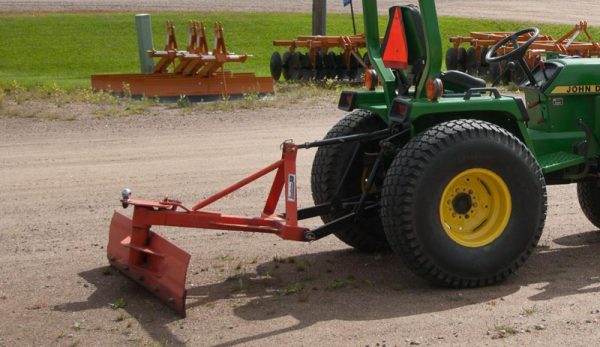
The three-point hitch is widely considered to be one of the greatest innovations in the history of tractors. This safe and simple means to attach implements to tractors forever changed the face of farming.
The design of the three-point hitch is simple but effective. Three points of attachment, arranged in triangular fashion, provide a rigid connection between tractor and implement. A pair of lower links at the ends of hydraulic arms (which you can raise or lower to adjust the attached equipment) compliment a single upper link.
But three-point hitches are not all created equal. And they vary greatly in size, matched to the strength of the tractor on which they’re installed.
We divide three-point hitches into five categories, labeled 0 through 4. The key to distinguishing the categories is to measure the diameters of the link pins used to attach implements to the hitch.
Of course, pin diameters aren’t the only variable parts of the equation. The spacing between the two lift arms is another important consideration.
The latter measurement can vary slightly (we’ve included approximate measurements below). But the pin diameters are standardized and are the defining measurements separating the five categories.
Read more: Farmers should give thanks for the advantages offered by the three-point hitch.
When shopping for implements, you need at least a basic understanding of the categories in order to ensure you purchase the right equipment. You’re pretty much out of luck if you want to use a Category 2 implement on a Category 1 tractor, though with adapters, the reverse is often possible.
With these disclaimers in place, let’s explore the five categories of three-point hitches, outlining their pin diameters and other general specifications.
Category 0
We define the smallest category by upper and lower link pins measuring 5/8 inches in diameter. The spacing between the two lift arms is approximately 20 inches.
You find category 0 hitches on light-duty garden tractors with 20 horsepower or less.
Read more: Consider these 4 tractor types for farm use!
Category 1
At one time or another, most hobby farmers have probably used a tractor with a Category 1 hitch. You’ll widely find these on tractors offering between 20 and 50 horsepower.
The top link pin measures 3/4 inch in diameter, while the two lift arm pins are slightly thicker at 7/8 inch. The spacing between the lift arms is approximately 26 inches.
You may also find references to “limited” Category 1 hitches. These hitches share the same dimensions as regular Category 1 hitches. However, they may be incapable of lifting all Category 1 implements as high as necessary for suitable performance.
Also Read: 3 Unusual Uses For A Three-Point Hitch
Category 2
Category 2 hitches are also common, albeit on slightly more high-powered tractors with horsepower ranging from 40 to 125. A Category 2 hitch increases the top link pin diameter to 1 inch and the lift arm pins to 1 1/8 inch. The spacing between the arms increases to approximately 32 inches.
Also Read: 4 Measurements To Know When Choosing A Hitch Ball
Category 3
The Category 3 hitch significantly increases the diameters of the link pins to 1 1/4 inch (top link pin) and 1 7/16 inch (lift arm pins). This provides the added strength necessary for heavy-duty implements powered by tractors in the 80 to 225 horsepower range.
The distance between the lift arms is variable. A straight Category 3 hitch features a spacing of approximately 38 inches, while the smaller Category 3N hitch shrinks the width to approximately 32 inches.
Category 4
The most durable three-point hitch category adds another 1/2 inch or more to the link pin diameters. They come in at 1 3/4 inch (top link pin) and 2 inches (lift arm pins).
When installed on tractors offering between 180 and 400 horsepower, it’s hard to conceive of a task that a Category 4 hitch can’t handle.
As with Category 3 hitches, the spacing between the lift arms of a Category 4 hitch is variable. The spacing on a regular Category 4 hitch is approximately 46 inches, while a Category 4N hitch spans approximately 36 inches.
Now that we have all the dimensions in mind, I think it’s time to start shopping for new equipment!




